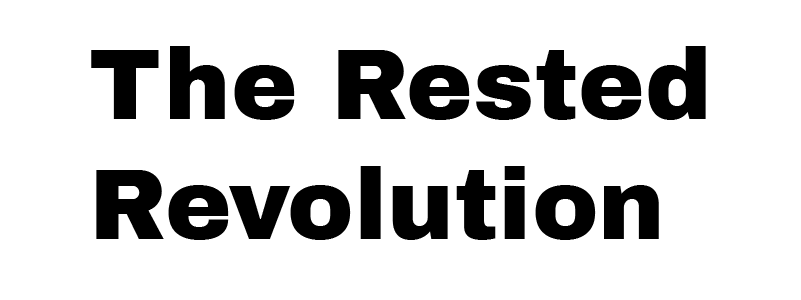Rest and Resilience
Rest is one of the best training arenas for resilience.
Initially, rest sounds too passive, too soft and even too basic to be resilient. So let me ask you this: is it easier for you to be resilient or to rest? Chances are you’ll identify more quickly with being resilient than you can say you’re well rested. The 21st century- with no thanks to (most) normalized workplace/business cultures- is really good at conditioning us to witness resilience as the pushing through; enduring; surviving; toughening out; choosing mind over matter.
That last one? It’s a gold nugget covered in poop because your mind is matter! It's literally part of our nervous systems that run the show. Sometimes we hear this phrase in situations where we’re meant to oversimplify our emotions so that we can get a job done. Reminder: denial is a hell of a stressor- you can’t lie to your body. On our best days: human evolution in consciousness actually connects us to every single cell, muscle, bone, organ and system in our body. On our worse days: this same evolution has tuned a lot of us out and away from this innate knowledge and our somatic intelligence. Instead, we're on a hamster wheel of misplaced emotions and excess production-consumption-cycles as a means to self-soothe. Biological, dude.
So how could rest possibly be an arena and wouldn’t we already know something that colossal lives within us?
Because it’s a practice. (Sorry, not sorry! Just giving you a real answer.)
In any function or movement, there is adaptation which involves some form of iteration. To really rest takes practicing and the actual practice of recovery, restoring, resetting, recharging, repose. Resilience is not how you survive, it’s how you thrive in the face of change and crisis.
I won't sugarcoat it: if using your somatic intelligence is new for you, it will be new. There will be levels of discomfort, uncertainty and effort in the process of creating your new neurophysiological connections and a steeper learning curve to interpreting your own body's communication before it feels more automatic or natural. But there’s a whole lot of non-cavity-causing sweetness in the ripples of impact through the process, from personal through to professional. You will also develop understanding, discover insight and maybe even wonder and awe. (And nope, it’s never too late to start and you don’t have to do it alone.)
We can see parallels in exercise/sport: until we've embodied the muscle memory to successfully master a movement, it'll feel sort of janky and we're not going to be getting the results we want to. I remember working with personal training clients on posture to support their health and fitness: every single person felt awkward for the first few weeks they were practicing being more mindful about their body in space (i.e. what was less than a centimeter of tucking their chin in to elongate their neck and relieve imbalanced muscle compensation, felt like they were craning their whole head up to the sky everywhere they went.) Every single personal eventually felt natural in their formerly 'new' posture and moved on, literally, to leverage their improved alignment with more ease for speed and strength.
Don't forget about joy and creative fun while you call your shots and explore yourself. Did I mention you're the architect, designer and developer of this arena? It doesn’t have to be a gladiator-style death ring. (Unless you're into that aesthetic, that's cool too.)
What’s your level of somatic intelligence?
Can you soothe yourself during times of fear, stress, pain and anger?
Unsure how to answer these questions or said no to the last one? You never know until you try. I designed a free, 3-step guide (PDF) that you can go through anytime and anywhere to get present, clear and respond.

